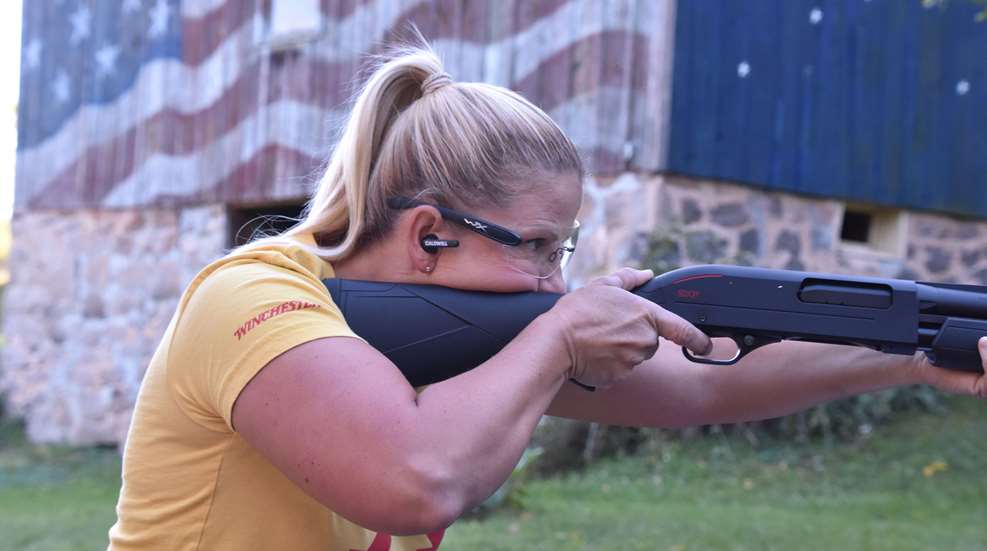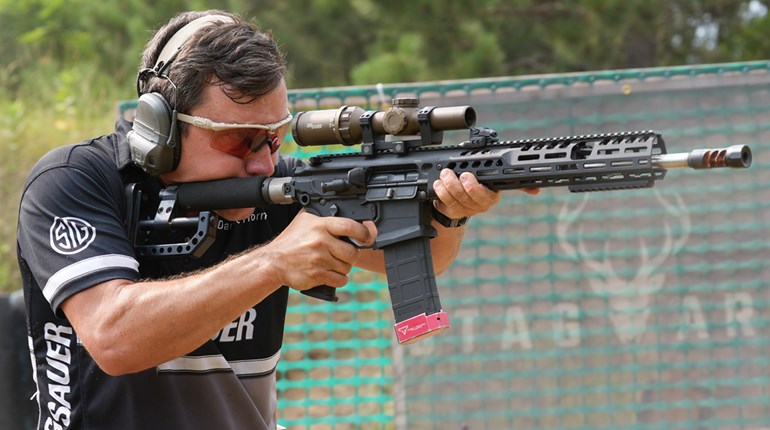
Learning to shoot a shotgun can be easy, but in order to shoot any shotgun with precision, it is important to understand concepts like sight picture.
Sights, Ribs and Beads
Shotguns usually have a rib on the top of the barrel, along with a front bead or sight. Sometimes there is a mid-rib bead, and sometimes a rear sight (often seen on dedicated slug guns for deer or predator hunting). Regardless of the sighting system, all shotguns require the shooter to follow certain steps in order to consistently get on target.
The Steps
1. Shoulder the gun correctly and position your face firmly on the stock.
It’s important to position your face so it is firmly on the stock—as if your face and the gun are one piece—so when the gun recoils, the gun won’t smack your cheek. Understanding this is important to having a good shotgun shooting experience.
Similarly, pull the gun tight to your shoulder so that you are connected to the gun and its recoil doesn’t smack into your shoulder.

Incorrect

Correct
2. Look down the rib.
Having your face firmly on the stock will also allow you to obtain a repeatable sight picture. You don’t want to look from above or below the rib; you want it level. You should never see the top, flat part of the rib. If you are looking down on the flat rib, it that means you’re not level.

Incorrect; rib is visible

Correct Sight Picture
The mid-bead, if you have one, is another way to gauge whether you are level or not. If it’s not behind the front bead, but above or below, then you are not level.
3. Know your pattern.
Your pattern and choice of choke are going to affect your ability to hit a target. Too tight a pattern and you might miss your target. Too big and it might spread apart too quickly and not break a clay or knock over a steel target. How far you lead a target, how you aim, depends on understanding YOUR shotgun’s pattern with that particular ammo.
You want enough pattern on the target to do the job (break it or knock it over). For static targets like those we shoot at in IPSC/Practical Shotgun competition, the amount we aim can change our choke selection. For the targets that will fall over easily, I can use a more open/wider-pattern choke. If I have heavy targets, far away, I have to use a tighter choke that places the shot in a smaller pattern. I can also use a tighter choke for far targets and aim more carefully for close targets.
When you get into flying clays, a tighter choke is needed, as the target travels further away. For clays that are close, you can use a more open pattern choke, like IC (Improved Cylinder).
But no matter at what you are shooting, hitting a shotgun target is a function of having a good sight picture and knowing where to aim. If you follow these steps, especially if you’ve never fired a shotgun before, your experience will be a positive one and you’ll likely be back to shoot a shotgun again!














































